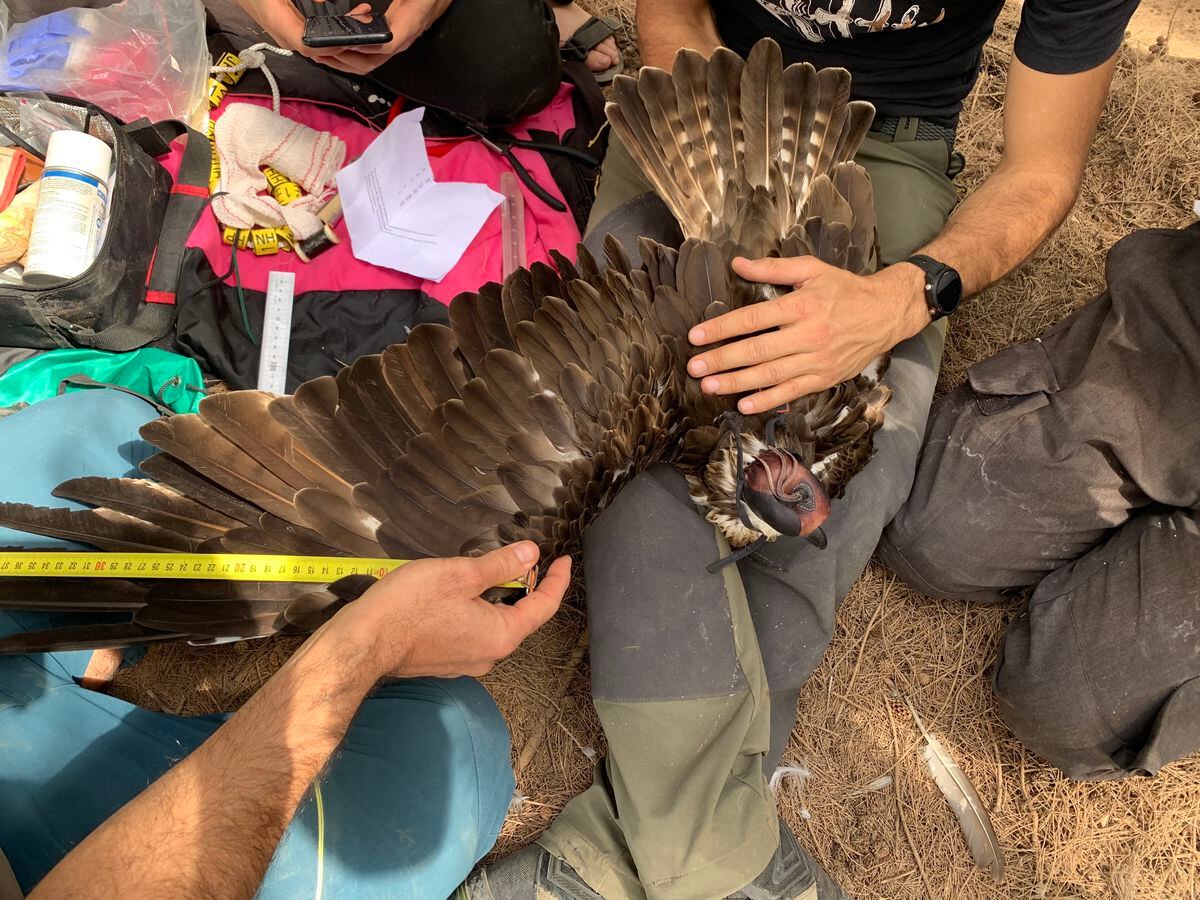Millions of birds leave Europe every year at the end of the breeding season and go to Africa in search of warmer places to spend the winter.
The osprey is one of these migratory species that does not hesitate to leave its birthplace, mainly near lakes and rivers in the north of the continent, to survive.
The Langue de Barbarie National Park (PNLB), in northern Senegal, in the Saint Louis region, is home to more than 200 specimens between October and April, the highest concentration of this bird in the non-breeding season documented in Africa. , according to Spanish biologists Rafa Benjumea and Blanca Pérez, who have been studying them since 2015 accompanied by local experts.
An osprey in the Langue de Barbarie National Park (PNLB), in northern Senegal.
"The importance of this bird of prey, widespread worldwide, although scarce in Spain, is that it feeds exclusively on fish, so its disappearance or the reduction of specimens would cause an imbalance in the ecosystem that is difficult to replace," explains Benjumea. , specialist in animal migration.
Biologists explain that it is an "umbrella species", that is, it is part of a group that, being protected, also implies the indirect preservation of other animals in the same habitat.
It is estimated that half of the birds that undertake the route each season die on the way
The first year that Pérez and Benjumea traveled to Senegal, they did so with the aim of supporting the drafting of a strategic management plan for the national park and training agents to carry out censuses.
They soon realized the extraordinary concentration of ospreys and the importance of knowing their structure and behavior in the area.
"In Europe, a lot of effort is devoted to its conservation, but in Africa there are very few data," the biologist clarifies.
Since then, both have focused, together with the PNLB staff, on documenting this population.
In 2023, the findings of the first four years of the study, which has had the scientific support of the University of Malaga and the Mixed Institute for Biodiversity Research CSIC of the University of Oviedo, will be published.
In mid-January, the team managed to ring and beacon
with a GPS system to two adult ospreys.
"Normally, in Europe, they are marked in the nest at birth and since the device lasts about three years, it is the movements of this first stage of the animal's life that are known in detail," Benjumea specifies.
The Spanish biologist Rafa Benjumea shows a collaborator from Senegal how to ring an osprey.Blanca Pérez
To do so, they devised various capture systems, spent nights outdoors and waited hours for one of these birds of prey to fall into the trap so that they could place what they call "the little backpack", a device that includes a transmitter and a small solar panel.
The effort had its reward.
The first was an unbanded female and, therefore, without information about her origin and date of birth.
They named her Tougou, in homage to the Belgian association Project Tougoupeul, the main funder of the mission.
The importance of this bird of prey, widespread worldwide, although scarce in Spain, is that it feeds exclusively on fish, so its disappearance or the reduction of specimens would cause an imbalance in the ecosystem that is difficult to replace.
Rafa Benjumea, biologist
“With it we will study the use of the habitat during the non-breeding season in Senegal and also the migratory route towards its breeding areas in Europe.
With this important information, we will increase knowledge of the species for its own conservation and to safeguard wetlands in Africa”, reveals Pérez, explaining that the Senegalese park where they work, the PNLB, is part of the Unesco Biosphere Reserve and is included in the so-called Ramsar list of Wetlands of High Importance, named after the Iranian city where this protection agreement was signed.
In the last census carried out on January 15, 152 ospreys were counted in one morning, which represents more than 1% of the population born in Europe (in 2021 the existence of between 9,600 and 13,600 breeding pairs was estimated).
Migrations, a history of links between scientists
On their annual adventure, migratory birds unite different countries, cultures and researchers, who must work together along the entire route with the common goal of protecting them throughout their journey.
Proof of this is the story of Gallo, the second osprey specimen that was analyzed in this mission.
From the metal ring he was wearing, it was known that he was born in Finland, so Benjumea spoke with colleagues in the Scandinavian country to contact the ringer, who revealed that it was a male born in 2019, specifically in the town of Kuhmalahti. , at South of that country.
"Most of those born in this region pass through Georgia and usually migrate to East Africa: Gallo [who has migrated to the west of the continent] confirms that nature is not always as we predict," says the Sevillian scientist.
A female osprey takes to the skies in Senegal.
Like Tougou, he was also equipped with a GPS device on his back that periodically generates information.
Already in the first days of the tracking, in which data on temperature, height, speed and location of the bird are offered every 20 minutes, novel conclusions were obtained for the team, such as that the eagles flew over more territory than expected and passed moments as important as the night rest outside the park.
“This supports the need to protect not only the reserves but also the surrounding places,” explains Pérez.
In addition to the common risks that threaten migratory routes, such as construction on the coasts, the drying up of wetlands, wind farms and deforestation, upon reaching this part of Africa these species must also face other threats such as storms from the desert or reservoirs, for example Diama on the Senegal River, which reduce food availability.
It is estimated that half of the birds that undertake the route each season die on the way.
For Moussa Niang, PNLB ecoguard, these collaborations with biologists such as Pérez and Benjumea are vital for the professionalization of the sector in Senegal, which still does not have its own ringing system.
“I have managed to validate my knowledge through the practices that I do with foreign scientists and I have managed to be the first qualified bander in the country, for the follow-up of five species”, he affirms.
You can follow PLANETA FUTURO on
,
and
, and subscribe
here
to our 'newsletter'
.















